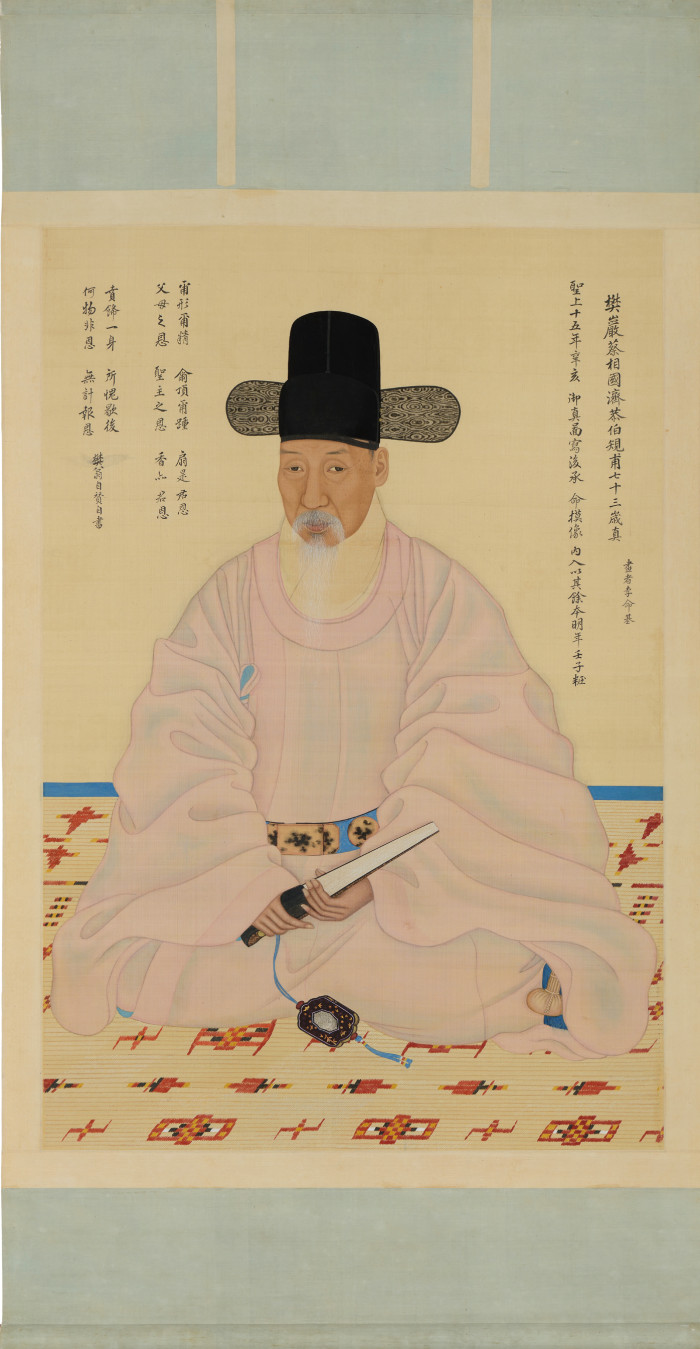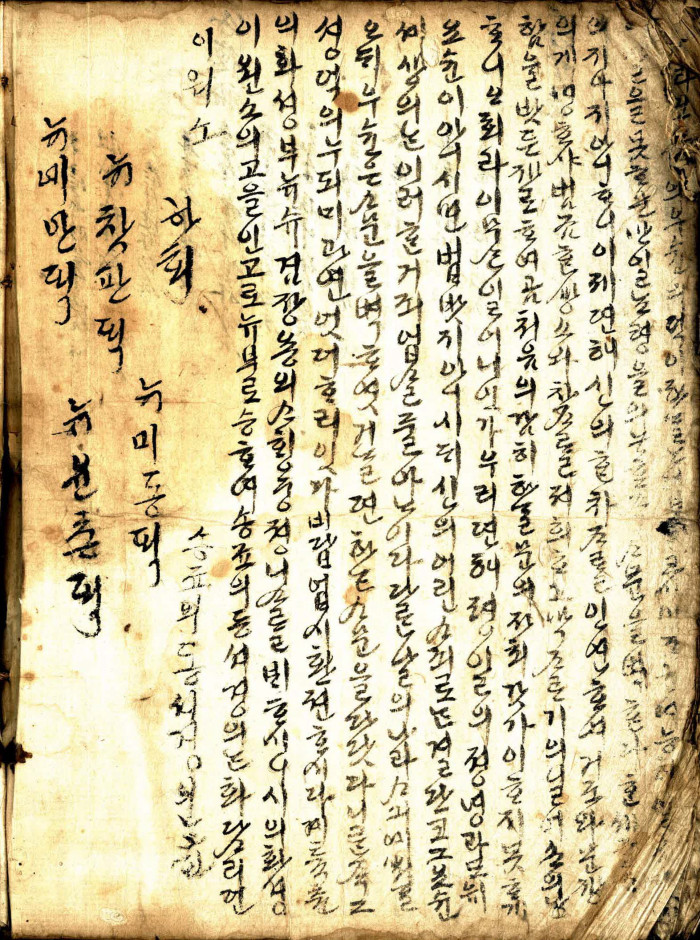GyeongGi Cultural Foundation
Prime Minister Chae Je Gong, Together with Silhak
Let me know! GGC (Gyeong Gi Culture) brings together the news of Gyeonggi Province's culture and arts and delivers it to citizens.
On the upcoming Friday, we will quickly inform you of exhibitions, performances, and festivals all over Gyeonggi Province! If you are curious about the culture news that is always close to us, . This radio program is hosted by GyeonGi Cultural Foundation with Gyeongin Broadcasting (90.7MHz). |
○ Sungyong Park: This is the time for “Gyeong Gi Culture” <Tell Me~ GGC> to quickly deliver the cultural news of Gyeonggi Province. We are together every Friday. Let's meet Reporter Park full of bright energy. Hello. Reporter Park!
▶ Suyoung Park: Hello. This is Suyoung Park, a ‘Culture News Messenger’ that quickly delivers cultural news such as various exhibitions and performances in Gyeonggi-do. Today, I would like to introduce a special exhibition jointly organized by The Museum of Silhak and the Suwon Hwaseong Museum.
○ Sungyong Park: What kind of exhibition is this?
▶ Suyoung Park: This is a special exhibition of <Prime Minister Chae Je Gong, Together with Silhak>. For a more detailed story, I will listen to Director Kim Taehee of The Museum of Silhak.

▲ <Chae Je Gong Portrait Poetry Book> (Chae Je Gong portrait, 1792, Suwon Hwaseong Museum collection, Treasure No. 1477-1 collectively designated)
[Interview/ Director Taehee Kim]
“This exhibition was held by Prime Minister Chae Je Gong. This is an exhibition on the theme of Chae Je Gong, who served as Prime Minister during the King Jeongjo period. He is a Prime Minister who played a very important role in the King Jeongjo period. It's not like Jeongjo's tangpyeong politics or reform politics can be done by himself. Prime Minister Chae Je Gong played a decisive role. That's why I paid attention to that part.”
▶ Suyoung Park: This is an exhibition that looks back on the life and achievements of Chae Je Gong, who helped Jeongjo's reform politics. You can enjoy a total of 30 related artifacts and 3 exhibited videos, including a portrait of Chae Je Gong designated as a treasure.
○ Sungyong Park: In fact, Chae Je Gong's status in the practice of reform in the late Joseon Dynasty was enormous. He was one of those who looked at the world from a very open perspective. If you go to The Museum of Silhak, you can feel this spirit of reform with your whole body as you take a peek at the life of Chae Je Gong. How is the exhibition organized?
▶ Suyoung Park: It is largely composed of 4 parts. Part 1, which deals with the background of Chae Je Gong's background and emerged as a representative of the southern people in the 18th century, Part 2 paying attention to his academic relevance to Practical Arts, and Part 3, as an outstanding bureaucrat who reads the change of the times, the main activities of Chae Je Gong Covered.
○ Sungyong Park: What are the major activities of Chae Je Gong?
▶ Suyoung Park: Representatively, the activities of Shinhae Tonggong, who contributed to the commercialization of Seoul, and Chae Je Gong, who was in charge of Suwon Hwaseong Construction, dealt with the activities. The final part of the fourth part includes a portrait of Chae Je Gong designated as a treasure under the theme of ‘Chae Je Gong, Remains in Pictures and Records’, as well as a special relic to be revealed for the first time in this exhibition.

▲ 《Bunsang Haengrok》(19th century, 1 book, owned by the Korea Institute for the Promotion of Korean Studies)
[Interview/ Director Taehee Kim]
“The first thing that appeared this time is a book called “Bunsang Haengrok”. Most of the books are in Chinese characters, but these are in Korean. Why was the record of Beonam Chae Je Gong written in Korean? The Korean language record was written in the context that not only those who know Chinese characters, but also all members of the family should know the conduct of a good family adult. Some of them came out a few years ago under the name of Sangdeok General Records, but it was unstable. This time, a book called <Bunsang Haengrok> appeared with the contents of the previous part.”
○ Sungyong Park: Behind the scenes! It seems to be more meaningful because it is written in Korean.
▶ Suyoung Park: It's more special because it's a pure Korean manuscript, but this is the first time it's released, so you won't be able to visit this exhibition, right?
○ Sungyong Park: Right. I have to go see these things with my own eyes. By the way, you said that <Bonsanghaengrok> is the first part of the book. Do you think there are a total of 2 books on the life of a resident?
▶ Suyoung Park: Yes, <Sangdeok General Records>, discovered a few years ago, corresponded to the latter part, and <Bunsang Haengrok>, which was discovered this time, corresponds to the previous part.
○ Sungyong Park: The Museum of Silhak, where this exhibition is held, is one of the institutions representing Gyeonggi culture in the late Joseon Dynasty. But it feels very difficult to say 'Silhak'.
▶ Suyoung Park: That's right. It is not easy to clearly define 'Silhak' as an idea. So, The Museum of Silhak was making a lot of effort to reach the public easily.

▲ <A secret appointment letter issued by Jeongjo to appoint Ueuijeong> (1788, Suwon Hwaseong Museum, Gyeonggi Province Tangible Cultural Property No. 347)
Interview/ Director Taehee Kim]
“Because our museum is called <The Museum of Silhak>, it is about traditional thought. So it can feel difficult. There are cases in which it is naturally easier to make an online-appropriate content to work hard while thinking about how to solve these things in the public. In addition, internally, the message was important at the time rather than a theoretical explanation, and even today, I am trying to capture and share a message that could have many implications and ideas.”
▶ Suyoung Park: What impressed me was that there were videos on the YouTube channel of ‘The Museum of Silhak', so I looked for it. However, along with the exhibition introduction videos that we generally know, he made another attractive exhibition promotion video.
○ Sungyong Park: How is it different?
▶ Suyoung Park: Usually, the curator gives detailed explanations about the exhibition. However, in The Museum of Silhak video, the museum staff personally appeared and introduced. Chae Je Gong, who wears a mask on his face, comes out, and a situational drama unfolds around him. Suddenly I call Jeong Yak-yong, and a man with short hair wears a female hanbok and appears as the woman of Chae Je Gong.
○ Sungyong Park: It's fun. After watching a video like this, Silhak, which was only difficult, seems to be fun and a little familiar.
▶ Suyoung Park: Yes, it really has such an effect. I was curious, so we talked about the video. I will continue to hear from Director Taehee Kim.
[Interview/ Director Taehee Kim]
“Our employees are making online content by running themselves. I am also participating in this and creating online content. We don't have the right answer at the moment, but we plan to make it in various forms.”
▶ Suyoung Park: The video is a little lax, but that's attractive. It's fun so you can watch it all the way. It would be nice to watch the video once before going to the exhibition. The reason why we have no choice but to visit The Museum of Silhak! I'll listen to Director Taehee Kim.

▲ Chae Je Gong's book, 《Bunamgo》, edited by Ga-Hwan Lee and Yak-Yong Jeong, (Early 19th century, owned by Suwon Hwaseong Museum, Gyeonggi Province Tangible Cultural Property No. 334)
[Interview/ Director Taehee Kim]
“Our The Museum of Silhak has great views around it. Even when the museum was closed this time due to the corona, many people went around. A lot of men and women come, and elderly couples come together. If you come with your family, you can think that this space is hard, but there are videos that children can have fun with. So I think The Museum of Silhak is a great place for generations to come together and experience and talk about Silhak.”
○ Sungyong Park: So, it's the Museum of Silhak, a wonderful space for all ages, men and women, couples, and families.
▶ Suyoung Park: The museum was located close to Paldang Dam. There are so many things to see nearby, such as the birthplace of Jeong Yak-yong and Dasan Ecological Park. It was nice to go lightly for an outing.
○ Sungyong Park: I often go nearby. I should stop by when I go nearby~ But when is this exhibition held?
▶ Suyoung Park: The exhibition runs until the next Sunday, August 23rd. Regarding how to make a reservation, I will listen to curator Kim Young-eun in detail.
[Interview/ Curator Kim Young-eun]
“Our advance reservations are only made online and can be made on the Museum of Silhak website. It is allowed five times a day, and the maximum number of people is less than 50. Same-day reservations are also possible. You can enter if you apply online 30 minutes before the scheduled visit. Our exhibition closes on Sunday, August 23rd, but from September, the Suwon Hwaseong Museum will also have a tour. You can continue to see the exhibition there. In the future, I would like to ask for a lot of interest in Silhak and Chae Je gong.”
○ Sungyong Park: From September, you can see a special exhibition <Prime Minister Chae Je Gong, Together with Silhak> at Suwon Hwaseong Museum.
▶ Suyoung Park: That's right. Next Sunday, you can see the exhibits at The Museum of Silhak until August 23, and at the Suwon Hwaseong Museum from September 3 to October 25. This is because there are various things to see with various relics and exhibition videos besides the first release of <Bunsang Haengrok> Please pay a lot of attention.
<Copyright(c)2002 GGC All rights reserved.>
- Writer
- GyeongGi Cultural Foundation
- About
- Everything about the GyeongGi arts and culture, GGCF
- homepage
- https://www.ggcf.kr/